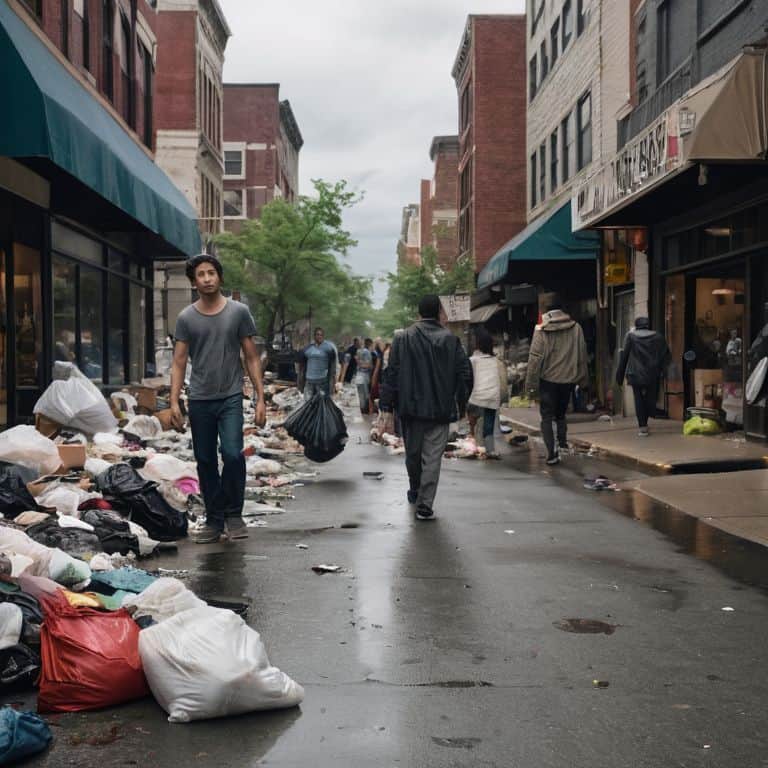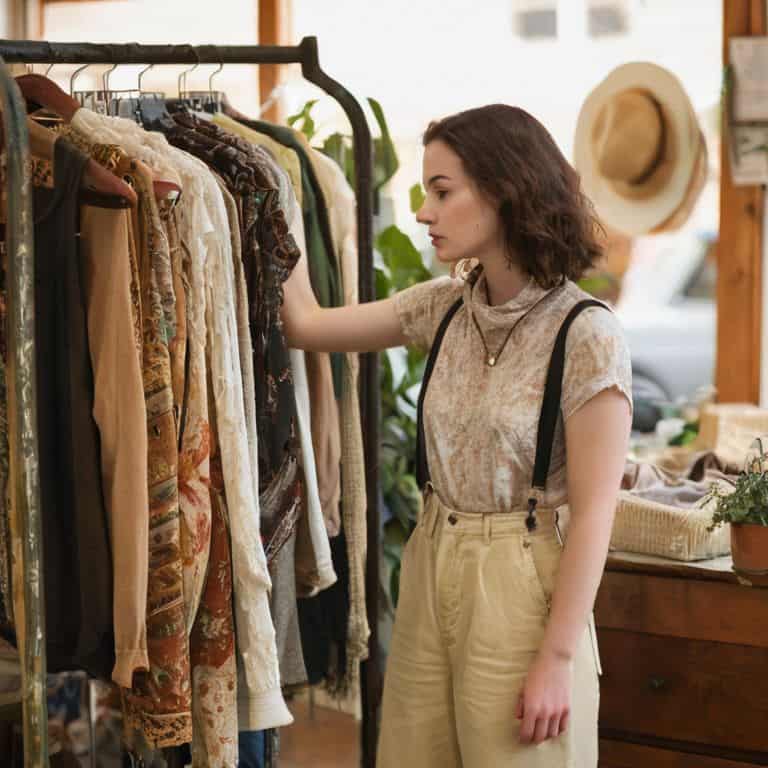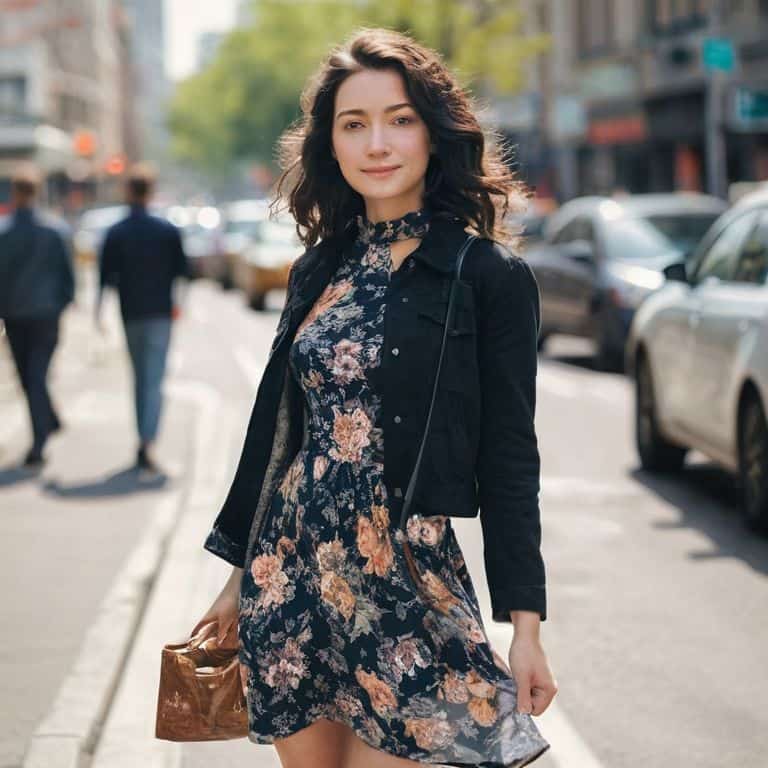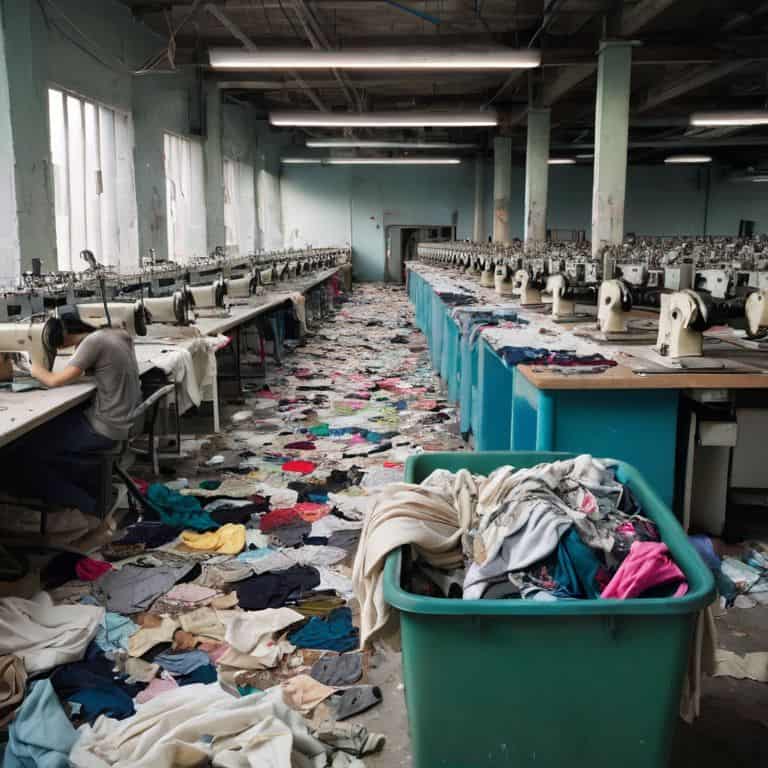I still remember the thrill of scoring a trendy outfit at a fraction of the cost, only to realize later that the problem with fast fashion wasn’t just about my wallet, but about the values I was inadvertently supporting. Let’s be real, who hasn’t fallen into the trap of fast fashion at some point – I know I have, and it’s time we got honest about the damage it’s doing to our planet and our sense of self. The constant stream of must-have items and limited-time offers can be overwhelming, making it difficult to discern what’s truly worth our hard-earned cash.
As someone who’s passionate about sustainable living, I’m excited to share my thoughts on how to break free from the fast fashion cycle. In this article, I promise to provide honest, experience-based advice on how to make more informed choices when it comes to your wardrobe. I’ll be sharing my own struggles and successes, as well as practical tips on how to adopt a more mindful approach to fashion. My goal is to empower you to make choices that not only benefit your wallet but also align with your values, and to show you that living sustainably doesn’t have to mean sacrificing style.
Table of Contents
- The Problem With Fast Fashion
- Unraveling Fast Fashion
- Exposing Fast Fashion Pollution Facts
- Exposing Fast Fashion Pollution Secrets
- Sustainable Trends for Conscious Style
- Unraveling Sustainable Fashion Trends
- Rewriting the Rules of Style
- The Problem With Fast Fashion
- Discovering Ethical Clothing Brands
- Embracing Second Hand for Ethical Fashion
- Embracing Zero Waste Fashion Design
- Revolutionizing With Zero Waste Design
- Breaking Free from the Fast Fashion Trap: 5 Essential Tips for a More Mindful Wardrobe
- Rethinking Our Wardrobe: 3 Key Takeaways
- Beyond the Surface
- Beyond the Facade: Redefining Fashion's Future
- Frequently Asked Questions
The Problem With Fast Fashion

As I wander through the bustling streets of my city, I find myself surrounded by the remnants of a sustainable fashion trend that’s lost its way. The once-noble pursuit of eco-friendly clothing has given way to a culture of disposability, where garments are worn once or twice before being discarded in favor of the latest style. It’s a phenomenon that’s not only contributing to the staggering statistics on fast fashion pollution facts, but also perpetuating a cycle of waste that’s as damaging to our planet as it is to our sense of self.
I’ve always been drawn to the world of ethical clothing brands, where the emphasis is on quality over quantity and the story behind each garment is just as important as the garment itself. But even these well-intentioned brands are often overshadowed by the behemoths of the fast fashion industry, which prioritize speed and profit over people and the planet. It’s a system that’s inherently flawed, and one that we must rethink if we hope to create a more circular economy in fashion.
As I delve deeper into the world of fashion, I’m heartened to see the rise of second hand shopping benefits, where pre-loved garments are given new life and the waste associated with fast fashion is reduced. It’s a small step towards a more zero waste fashion design, but one that holds tremendous promise for a future where fashion and sustainability coexist in harmony.
Unraveling Fast Fashion

As I delve into the world of fast fashion, I find myself entangled in a web of contradictions. On one hand, the thrill of sustainable fashion trends is undeniable, with designers and brands pushing the boundaries of eco-friendly style. On the other hand, the harsh reality of fast fashion pollution statistics is a sobering reminder of the industry’s true cost. I think back to my own experiences, rummaging through thrift stores and second-hand shops, discovering hidden gems that not only reduced my environmental footprint but also added a touch of uniqueness to my wardrobe.
The benefits of second hand shopping are multifaceted, from reducing waste to supporting local communities. Yet, the allure of fast fashion remains, with its promise of instant gratification and affordable prices. As I reflect on my own relationship with fashion, I realize that it’s time to redefine my priorities. I’m drawn to ethical clothing brands that prioritize transparency and fairness, rather than just chasing the latest trends. By embracing a more mindful approach to fashion, I hope to contribute to a circular economy in fashion, one that values longevity over disposability.
In this journey of self-discovery, I’m excited to explore the realm of zero waste fashion design, where creativity meets sustainability. By embracing imperfections and rejecting the notion of perfection, I believe we can uncover a more authentic sense of style. As I continue to unravel the threads of fast fashion, I’m reminded that the true beauty of fashion lies not in its ability to follow trends, but in its capacity to tell stories, evoke emotions, and connect us to our surroundings in a meaningful way.
Exposing Fast Fashion Pollution Facts
As I delve into the world of fast fashion, I’m struck by the sheer volume of waste it generates. _Toxic chemicals_ and dyes used in manufacturing are released into our waterways, harming aquatic life and contaminating the food chain. The consequences of our shopping habits are far-reaching, and it’s time we acknowledge the damage.
The numbers are staggering, with millions of tons of clothing ending up in landfills each year. Microplastics from synthetic fabrics are ingested by animals, eventually making their way into our own food supply. It’s a sobering thought, and one that prompts me to reexamine my own consumption habits and the true cost of fast fashion.
Exposing Fast Fashion Pollution Secrets
As I walk through the city streets, camera in hand, I’m constantly reminded of the hidden costs of fast fashion. The trendy clothes that fill our stores and online shopping carts come with a price that’s not always visible – the pollution that’s choking our planet. From the production process to the end of a garment’s life, fast fashion leaves a trail of waste and destruction.
I’ve seen it firsthand, from the toxic dyes that pollute our waterways to the staggering amounts of textile waste that end up in our landfills. It’s a harsh reality that we can no longer ignore, and one that demands a closer look at the true cost of our fashion choices.
Sustainable Trends for Conscious Style
As I wander through the city, camera in hand, I’ve noticed a shift in the way people approach fashion. There’s a growing interest in sustainable materials, and it’s exciting to see this trend take hold. From recycled polyester to organic cotton, the options for eco-friendly fashion are expanding, and it’s no longer a niche interest.
I’ve found myself drawn to second-hand shopping, not just for the environmental benefits, but for the unique stories each piece tells. A vintage dress, a pair of worn jeans – each item has a history, and that’s what makes it truly special.
Unraveling Sustainable Fashion Trends
As I delve into the world of sustainable fashion, I’m struck by the emergence of eco-friendly materials that are redefining the industry. From plant-based fabrics to recycled textiles, the options are vast and exciting. I’ve been exploring the stories behind these innovative materials, and it’s fascinating to see how they’re not only reducing waste but also creating new opportunities for designers to experiment and push boundaries.
In this shift towards sustainability, I’ve noticed a growing trend towards slow fashion, where the focus is on investing in timeless, high-quality pieces rather than fast, disposable ones. This approach encourages a more mindful and intentional approach to fashion, one that values the story behind each garment and the people who created it.
Rewriting the Rules of Style

As I wander through the city, camera in hand, I find myself drawn to the eclectic styles that populate the streets. It’s a treasure trove of sustainable fashion trends, where people are redefining what it means to look good. I see a woman wearing a vintage dress, paired with a modern jacket, and I’m struck by the beauty of mixing old and new. It’s a testament to the power of circular economy in fashion, where clothes are valued for their timeless quality, rather than their disposability.
I’ve started to explore second hand shopping benefits, and I’m amazed by the unique pieces I’ve discovered. A vintage leather jacket, a pair of high-waisted jeans, a flowy sundress – each item has a story to tell, and a history that’s worth preserving. By choosing to shop second-hand, I’m not only reducing my environmental impact, but I’m also supporting a more ethical clothing brands approach to fashion. It’s a small step, but one that feels significant in the grand scheme of things.
As I delve deeper into the world of sustainable fashion, I’m excited to discover new designers who are pushing the boundaries of zero waste fashion design. It’s a challenging task, but one that yields incredible results – clothes that are not only beautiful, but also kind to the planet. By embracing this approach, we can create a more mindful, more thoughtful approach to fashion, one that values people and the planet above profit.
The Problem With Fast Fashion
As I wander through the city streets, camera in hand, I find myself drawn to the unexpected beauty of urban landscapes. But even amidst the grit and grime, I’m reminded of the impact of our daily choices – like the clothes we wear. The fashion industry, in particular, has a significant role to play in shaping our relationship with the environment. Sustainable fashion trends are gaining momentum, but there’s still a long way to go. I think back to my own journey, scouring thrift stores and vintage shops for unique pieces that tell a story.
My love for urban photography and collecting vintage vinyl records has taught me to appreciate the value of imperfection. In an era where fast fashion reigns supreme, it’s refreshing to see ethical clothing brands emerging as a counter-movement. These brands prioritize transparency, fair labor practices, and environmentally-friendly materials. As someone who’s passionate about circular economy in fashion, I believe that our wardrobes should be treated as investments, not disposable commodities.
As I reflect on my own experiences with fast fashion, I realize that it’s time to get honest about the damage it’s doing to our planet and our sense of self. The benefits of second hand shopping are numerous, from reducing waste to discovering one-of-a-kind treasures. By embracing zero waste fashion design, we can work towards a more mindful approach to fashion – one that values creativity, sustainability, and the stories behind each garment.
Discovering Ethical Clothing Brands
As I delve into the world of sustainable fashion, I’m excited to discover ethical clothing brands that are redefining the industry’s standards. These brands are not only committed to reducing their environmental footprint but also to promoting fair labor practices and transparency throughout their supply chains.
I’ve been exploring some of these brands, and I’m drawn to their unique stories and slow fashion approaches, which prioritize quality over quantity and encourage a more mindful approach to consumption.
Embracing Second Hand for Ethical Fashion
As I wander through thrift stores, I’m reminded that embracing individuality is a powerful act of rebellion against the fast fashion machine. By choosing second-hand, we’re not only reducing waste but also adopting a more mindful approach to our wardrobes. It’s about finding unique pieces that tell a story, rather than conforming to the latest trendy narrative.
In this journey, I’ve come to realize the importance of slow fashion, where quality and character triumph over quantity and disposability. By embracing second-hand, we’re able to break free from the cycle of constant consumption and focus on what truly matters – the stories, the memories, and the people behind the clothes.
Embracing Zero Waste Fashion Design
As I delve into the world of zero waste fashion design, I’m struck by the ingenuity of designers who are redefining the way we think about clothing production. From using recycled materials to creating garments with minimal waste, these innovators are proving that style and sustainability can go hand-in-hand.
I’ve been exploring the work of designers who are embracing circular design principles, where clothes are crafted to be recycled, reused, or biodegradable, reducing the environmental impact of the fashion industry.
Revolutionizing With Zero Waste Design
As I wander through the city, camera in hand, I find inspiration in the urban landscape for a more mindful approach to fashion. I’ve come to realize that zero waste design is not just a trend, but a necessary step towards a more sustainable future.
By embracing circular production, we can redefine the way clothes are made, consumed, and reused, ultimately reducing the staggering amount of waste generated by the fashion industry.
Breaking Free from the Fast Fashion Trap: 5 Essential Tips for a More Mindful Wardrobe
- Take a step back and assess your current wardrobe, identifying pieces that bring you joy and serve a purpose, rather than just filling a gap
- Adopt a ‘one in, one out’ policy to maintain a balanced wardrobe and reduce waste, considering the environmental and social impact of each new purchase
- Invest in timeless, high-quality pieces that won’t fall apart after a few wearings, and learn to care for them properly to extend their lifespan
- Explore alternative fashion options like swapping, renting, or buying second-hand, which can be a fun and creative way to refresh your style while reducing your footprint
- Practice the art of ‘slow fashion’ by taking time to consider each purchase, asking yourself if you really need it, and imagining the story behind the garment – who made it, and how will it end up?
Rethinking Our Wardrobe: 3 Key Takeaways
By embracing sustainable trends and conscious style, we can break free from the cycle of fast fashion and cultivate a more authentic, personal aesthetic that reflects our values and connection to the world around us
Exposing the hidden secrets of fast fashion pollution and waste can be a catalyst for change, encouraging us to seek out zero-waste design solutions and alternative, ethical fashion practices that prioritize people and the planet over profit
Ultimately, redefining our relationship with fashion requires a willingness to get a little messy and imperfect – whether that means experimenting with second-hand shopping, learning to repair and repurpose our existing clothes, or simply embracing the beauty of worn, well-loved garments as a testament to the stories they hold
Beyond the Surface
Fast fashion isn’t just a trend, it’s a reflection of our society’s values – where the pursuit of perfection and novelty has led us to sacrifice sustainability, individuality, and often, our own sense of self.
Maya Sterling
Beyond the Facade: Redefining Fashion's Future
As I reflect on our journey through the world of fast fashion, it’s clear that we’ve only scratched the surface of a complex, deeply ingrained issue. We’ve unraveled the threads of deception, exposed the secrets of fast fashion pollution, and explored the revolutionary potential of zero-waste design and second-hand shopping. Through it all, I’ve come to realize that the problem with fast fashion isn’t just about the clothes themselves, but about the values we’re selling – the idea that style must be cheap, trendy, and constantly renewed. It’s time for us to rethink our relationship with fashion, to seek out sustainable trends that align with our values and promote a more conscious, compassionate approach to style.
So let’s embark on this new path together, one that celebrates individuality over conformity and finds beauty in the imperfect, the unique, and the authentic. As we move forward, I encourage you to join me in embracing the beauty of imperfection, in finding inspiration in the everyday, and in redefining what it means to live a well-curated life – one that’s rich in experience, connection, and meaning. Together, we can create a more thoughtful, more sustainable, and more compassionate fashion landscape – one that truly reflects the complexity, diversity, and beauty of our world.
Frequently Asked Questions
How can I make a significant impact on reducing fast fashion's environmental footprint in my daily life?
For me, it starts with small, intentional choices – like swapping trendy pieces for timeless, well-made garments, or exploring local thrift stores for unique finds. I also try to adopt a “one in, one out” policy to avoid clutter and waste. It’s about embracing a mindset of mindful consumption, and finding beauty in the imperfect, well-loved pieces that tell a story.
What are some affordable and accessible alternatives to fast fashion that won't compromise my personal style?
For me, it’s all about mixing high and low – thrift stores, vintage shops, and online marketplaces like Depop or Poshmark can be treasure troves for unique pieces that won’t break the bank. I also love swapping clothes with friends or joining local clothing swaps to refresh my wardrobe without sacrificing style or sustainability.
Can adopting a zero-waste or second-hand fashion approach really make a difference in the grand scheme of the fashion industry's overall sustainability?
As I sift through thrift stores or plan my outfits around timeless pieces, I’m reminded that every choice, no matter how small, contributes to a broader shift in the fashion industry’s sustainability narrative. Adopting zero-waste or second-hand approaches may seem like a drop in the ocean, but collectively, these ripples can transform the industry’s tidal wave of waste and excess.
